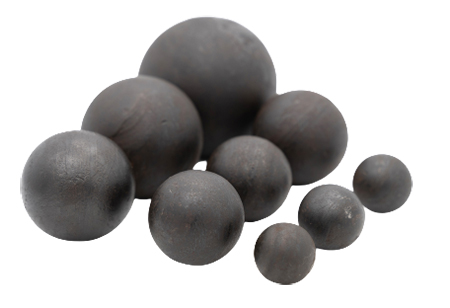Analysis of the Factors Affecting the Wear Rate of Grinding Ball
The wear rate of grinding balls can be influenced by several factors. Here are some of the key factors that can affect the wear rate:
1. Ball material:
The material composition of the grinding balls plays a crucial role in their wear rate. Different materials have varying hardness, toughness, and resistance to abrasion. Common materials used for grinding balls include steel and cast iron.
2. Ball hardness:
The hardness of the grinding balls is an important factor affecting wear rate. Harder balls tend to have a lower wear rate as they are more resistant to deformation and abrasion. The hardness is typically measured using the Rockwell or Brinell hardness scale.
3. Ball size and shape:
The size and shape of the grinding balls can impact wear rate. Smaller balls generally experience higher wear rates due to the higher frequency of impacts and grinding actions. The shape of the balls, such as spherical or irregular, can also affect their wear characteristics.

4. Ball surface quality:
The surface quality of grinding balls is significant in determining wear rate. A smooth and defect-free surface tends to reduce wear, while a rough or pitted surface can accelerate wear.
5. Grinding conditions:
The operating conditions of the grinding process can influence the wear rate of balls. Factors like rotational speed of the mill, grinding media distribution, slurry density, pH level, and temperature can all affect the wear rate. Aggressive grinding conditions may lead to higher wear rates.
6. Abrasive properties of the ore:
The nature of the ore being ground can significantly impact the wear rate. Hard and abrasive ores will cause more wear on the grinding balls compared to softer ores. The mineral composition, particle size distribution, and moisture content of the ore are important considerations.
7. Ball-to-ore ratio:
The ratio of grinding balls to the amount of ore being ground can affect wear rate. Insufficient ball-to-ore ratio may lead to increased wear as the balls will impact each other more frequently than the ore particles.
8. Lubrication and cooling:
Adequate lubrication and cooling of the grinding balls can help reduce wear. Insufficient lubrication or cooling can result in increased friction and heat generation, leading to higher wear rates.
It's important to note that the relative importance of these factors may vary depending on the specific grinding operation and equipment used. Therefore, it's essential to consider these factors in combination and optimize the grinding process accordingly to minimize wear and maximize grinding efficiency.





